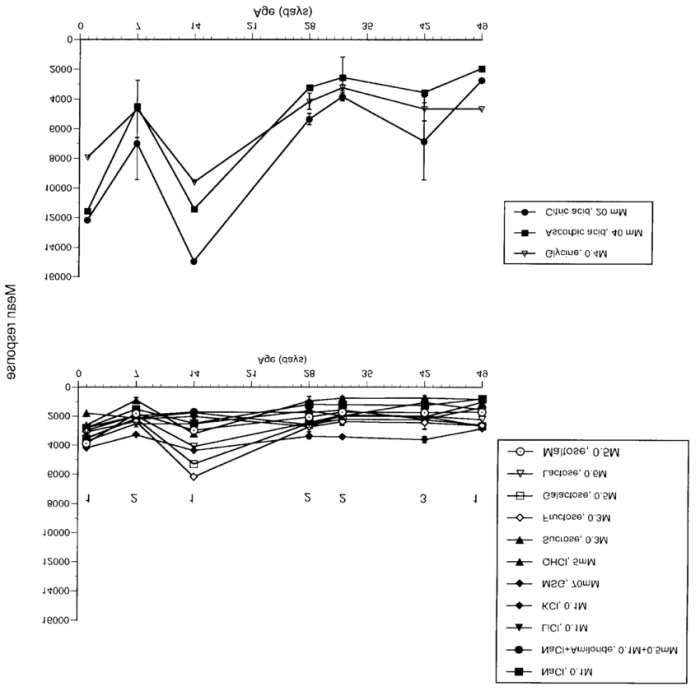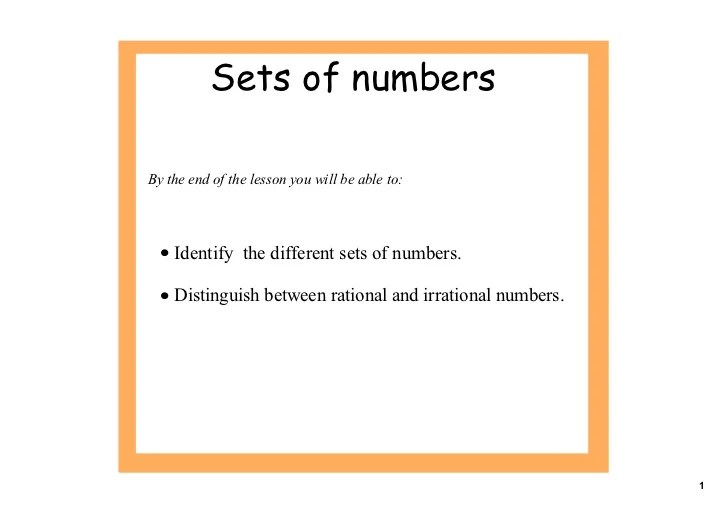Set of numbers to be summated – Step into the captivating world of set summation, where numbers dance in harmony to reveal hidden patterns and solve complex problems. From the mundane to the extraordinary, summation finds its place in a myriad of fields, empowering us to make informed decisions and unravel the mysteries of the universe.
This comprehensive guide will take you on an enlightening journey through the intricacies of set summation. We’ll explore the types of number sets that can be summed, uncover the methods used to perform summation, and delve into the practical applications that make summation an indispensable tool in various disciplines.
Number Set Identification
When summing numbers, it’s essential to identify the type of number set they belong to. Different number sets have varying properties that affect the operations performed on them.
Integer Numbers
Integers are whole numbers, both positive and negative, including zero. They do not include fractions or decimals. Examples of integers include -5, 0, 7, and 12.
Rational Numbers
Rational numbers are numbers that can be expressed as a fraction of two integers, where the denominator is not zero. They include integers and fractions. Examples of rational numbers include -3/4, 0.5, and 10.
Real Numbers
Real numbers encompass all rational numbers and irrational numbers. Irrational numbers are numbers that cannot be expressed as a fraction of two integers. They include decimals that are non-terminating and non-repeating, such as π and √2.
Summation Methods

The task of summing up a set of numbers can be accomplished through various methods, each with its own advantages and drawbacks. Understanding these methods empowers individuals with the flexibility to choose the most suitable approach based on the specific context and available resources.
Direct Addition
Direct addition involves manually adding each number in the set one after the other. This method is straightforward and suitable for small sets of numbers. However, it becomes tedious and prone to errors as the number of elements increases.
Using a Calculator
Calculators provide a convenient and efficient way to sum up numbers. They automate the addition process, minimizing the risk of errors and saving time. Calculators are particularly useful for large sets of numbers or complex calculations.
Employing Mathematical Formulas
Mathematical formulas offer a systematic approach to summation. Formulas like the arithmetic series formula (Sn = n/2 – (a + l)) can be applied to specific types of number sets. This method is advantageous when dealing with large, evenly spaced sets of numbers.
Applications of Summation
Summation finds practical applications in various fields, aiding in problem-solving and decision-making processes.
In statistics, summation helps calculate measures of central tendency (e.g., mean, median, mode) and measures of dispersion (e.g., variance, standard deviation). These measures provide insights into data distribution and variability, facilitating statistical analysis and hypothesis testing.
Finance
In finance, summation is crucial for calculating financial ratios, such as the debt-to-equity ratio or return on investment (ROI). These ratios help analysts assess a company’s financial health, make investment decisions, and forecast future performance.
Engineering
In engineering, summation is used to calculate forces, moments, and other physical quantities that are distributed over a continuous interval. For example, in structural engineering, engineers use summation to determine the total load on a beam or bridge.
Summation Notation

Summation notation, also known as sigma notation, is a mathematical shorthand for representing the sum of a set of numbers. It is commonly used in various mathematical disciplines, including algebra, calculus, and statistics.
The sigma notation consists of the Greek letter sigma (Σ), which represents the sum, followed by an index variable that ranges over the set of numbers being summed, and finally, the expression to be summed.
Expression of Sum
To express the sum of a set of numbers using sigma notation, follow these steps:
- Choose an index variable to represent the position of each number in the set.
- Write the expression to be summed, using the index variable.
- Place the expression under the sigma symbol, with the index variable as the lower and upper limits of the summation.
For example, to represent the sum of the first 10 natural numbers, we can write:
$$\sum_n=1^10 n = 1 + 2 + 3 + 4 + 5 + 6 + 7 + 8 + 9 + 10$$
Properties of Summation
Summation possesses several algebraic properties that simplify calculations and make it a versatile tool in mathematics. These properties include associativity, commutativity, and distributivity.
Associativity
The associative property states that the grouping of terms within a sum does not affect the result. In other words, the order in which terms are added can be changed without altering the sum. Mathematically, this property can be expressed as:
(a + b) + c = a + (b + c)
For example, the sum of 1, 2, and 3 can be calculated as (1 + 2) + 3 or 1 + (2 + 3), and the result will always be 6.
Commutativity
The commutative property states that the order of terms within a sum can be changed without affecting the result. In other words, the terms can be added in any order. Mathematically, this property can be expressed as:
a + b = b + a
For example, the sum of 1 and 2 can be calculated as 1 + 2 or 2 + 1, and the result will always be 3.
Distributivity, Set of numbers to be summated
The distributive property states that the sum of a term multiplied by a constant is equal to the constant multiplied by the sum of the terms. Mathematically, this property can be expressed as:
a(b + c) = ab + ac
For example, the sum of 2 multiplied by (1 + 3) can be calculated as 2(1 + 3) or 2(1) + 2(3), and the result will always be 8.
Summation Techniques: Set Of Numbers To Be Summated

In this section, we’ll explore techniques to simplify and evaluate sums of complex number sets. These techniques can make it easier to find the sum of series that might otherwise be difficult or impossible to evaluate directly.
Telescoping Series
A telescoping series is a series where the terms cancel out except for the first and last terms. This allows us to evaluate the sum of the series by subtracting the last term from the first term.
- Example: Evaluate the sum of the series 1 – 1/2 + 1/2 – 1/4 + 1/4 – 1/8 + …
- Solution: This is a telescoping series. The terms cancel out except for the first and last terms. So, the sum is:
1- 1/2 + 1/2 – 1/4 + 1/4 – 1/8 + … = 1 – 1/8 = 7/8
Partial Fractions
Partial fractions can be used to decompose a rational function into a sum of simpler rational functions. This can be useful for evaluating sums of series that involve rational functions.
- Example: Evaluate the sum of the series 1/(n(n+1)) for n from 1 to infinity.
- Solution: We can decompose 1/(n(n+1)) into partial fractions as follows:
- So, the sum of the series becomes:
- We can evaluate each of these series using the formula for the sum of an arithmetic series:
- Therefore, the sum of the original series is:
1/(n(n+1)) = 1/n- 1/(n+1)
Σ[1/(n(n+1))] = Σ[1/n]- Σ[1/(n+1)]
Σ[1/n] = HnΣ[1/(n+1)] = H n-1
When faced with a set of numbers to be summated, it’s easy to lose sight of the bigger picture. For instance, voyages in english grade 6 require an understanding of the concepts of summation and calculation. This understanding allows students to grasp the intricacies of summing numbers and applying them to real-world scenarios.
Σ[1/(n(n+1))] = Hn– H n-1= 1
Summation in Programming

Summation, the process of adding up a series of numbers, is a fundamental operation in programming. It finds applications in various domains, such as data analysis, numerical simulations, and computer graphics.
In programming languages, summation is typically implemented using loops and arrays. Loops allow us to iterate over a sequence of numbers and accumulate their sum in a variable. Arrays provide a convenient way to store the numbers to be summed.
Using Loops for Summation
The following code snippet demonstrates the use of a loop for summation in Python:
# Initialize the sum variable
sum = 0
# Iterate over the numbers in the array
for num in numbers:
# Add the current number to the sum
sum += num
# Print the sum
print(sum)
In this code, the loop iterates over each element in the ‘numbers’ array and adds it to the ‘sum’ variable. The loop continues until all elements in the array have been processed.
Using Arrays for Summation
In some cases, it may be more efficient to use an array to store the partial sums. This approach can reduce the number of iterations required, especially when the number of elements to be summed is large.
The following code snippet demonstrates the use of an array for summation in C++:
// Initialize the sum array
int sum[N];
// Calculate the partial sums
for (int i = 0; i < N; i++)
sum[i] = sum[i-1] + numbers[i];
// Print the sum of the last element
cout << sum[N-1] << endl;
In this code, the 'sum' array stores the partial sums up to each element in the 'numbers' array. The loop iterates over the elements in the 'numbers' array and calculates the partial sums. The final sum is obtained by accessing the last element in the 'sum' array.
Visualizing Summation
Visualizing summation can enhance understanding and provide a clear representation of the process. A table or chart can be designed to depict the accumulation of numbers, making the summation process more intuitive.
Table Representation
A table can be constructed with columns representing the numbers being summed and rows indicating the partial sums. Each cell in the table displays the sum of the numbers up to that point. Colors or shading can be used to highlight the accumulation, with darker shades indicating larger sums.
For example, a table representing the summation of the numbers 1 to 5 would look like this:
| Number | Partial Sum |
|---|---|
| 1 | 1 |
| 2 | 3 |
| 3 | 6 |
| 4 | 10 |
| 5 | 15 |
Chart Representation
A chart can also be used to visualize summation. A bar chart or line graph can be created, with the x-axis representing the numbers being summed and the y-axis representing the partial sums. Again, colors or shading can be used to illustrate the accumulation.
The following bar chart represents the summation of the numbers 1 to 5:

Summation in Real-World Contexts
Summation, the process of finding the total of a series of numbers, plays a crucial role in various real-world scenarios, impacting decision-making and problem-solving.
Essential Real-World Applications of Summation
*
-*Financial Analysis
Summation is used to calculate totals for budgets, expenses, and revenue, enabling businesses to make informed decisions regarding financial planning and resource allocation.
-
-*Data Analysis
In statistical analysis, summation is employed to find the mean, median, and mode of a dataset, providing insights into data distribution and patterns.
-*Engineering
Summation is essential in structural analysis, where engineers calculate the total force or load acting on a structure to ensure its stability and safety.
-*Project Management
Project managers use summation to estimate project costs, durations, and resource requirements, facilitating efficient planning and execution.
-*Scientific Research
Scientists employ summation to analyze experimental data, such as calculating the total energy released in a reaction or the cumulative growth of a population.
FAQ Section
What is the most efficient method for summing large sets of numbers?
Using mathematical formulas or programming constructs (e.g., loops) can significantly improve efficiency for large sets.
How is summation used in real-world contexts?
Summation finds applications in statistics (calculating averages), finance (analyzing financial data), and engineering (determining forces and moments).
What is the significance of summation notation?
Summation notation provides a concise and clear way to represent the sum of a set of numbers, simplifying complex expressions.